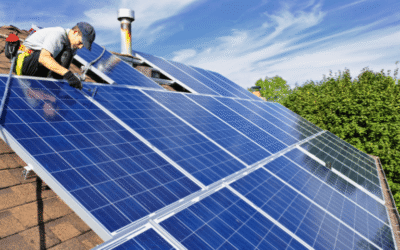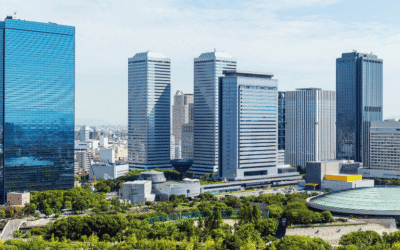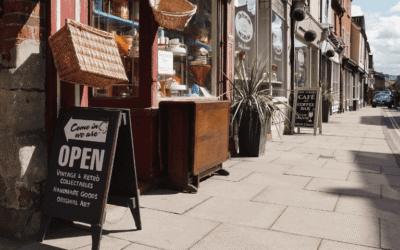Emergency LED Lighting for Commercial Buildings
NFPA Safety Code 101 is updated three times a year and states that all commercial buildings must have emergency and exit lighting to protect occupants from hazards like fire. To ensure your building’s emergency lighting is up to code, you can review the rules and regulations.
Understanding the Importance of Emergency LED Lighting
Fire alarms and sprinklers are a vital part of a building’s system. However, so is emergency LED lighting. Fire alarms alert occupants and sprinklers help extinguish the flames. Emergency lighting ensures occupants can safely move throughout the building to the lighted emergency exits. Without emergency lighting, it is difficult to safely navigate the hazard.
Best Places to Install Emergency Lighting
Emergency lighting along exit routes is a requirement in most occupied buildings but there are a few exceptions.
- Buildings with plenty of natural light during the and are not occupied at night may be exempt from emergency lighting requirements if approved by local safety agencies.
- Unoccupied buildings are not required to install emergency lighting
- Towers with no more than three occupants at any given time do not have to install emergency lighting as long as the escape ladder is easy to locate from all points.
For buildings that are not exempt, there are some areas where you want to install emergency lighting and exits.
- Windowless rooms larger than small closets
- Designated emergency stairways
- Hallways and aisles leading to an emergency exit
- Ramps leading to the emergency exit
- Escalators leading to lower floors and emergency exits
- By any exit in common areas that are open to the public
- Doors with delayed locking mechanisms
- New sensor-release electronic locking systems for doors
How to Test Your Building’s Emergency Lighting System
Your customers, visitors, and employees depend on the building’s emergency lighting to safely guide them to the exits. Periodic testing will help ensure the system is functioning optimally, it is also a legal requirement under NFPA 101. Failing to follow safety codes places building occupants at risk and increases your chances of receiving hefty fines and other penalties
The NFPA 101 code requirements offer building owners and managers three testing options. These are,
- Keep written records and test manually
- Automatically test with self-testing/self-diagnostic battery-operated lighting equipment
- Automate testing with a computer-based self-test lighting system
Regardless of the option you choose, all commercial building emergency lighting systems must be tested monthly for a 30-second test and annually for a 90-minute inspection.
Action Services Group offers fully turn-key Life Safety Lighting Services on a national, reginal, and local level. If your organization is interested in developing a Life Safety Lighting Service plan, you can schedule a call that fits your needs here.
Monthly Emergency Lighting Testing
Monthly emergency lighting testing involves the following,
- Make sure emergency lighting conforms to the code
- Check equipment for damage.
- Perform the 30-second push switch test
- Make sure to check for lamps that are illuminated and make sure they are correctly aimed
- Keep a monthly log to be inspected by local safety authorities
Annual Emergency Lighting Testing
An annual emergency lighting test includes,
- Completely inspect the unit
- Perform the required 90-minute testing of the battery/lighting system
- Verify the battery’s condition, voltage, as well as the date manufactured.
- For proper operation and damage, check the AC/DC bulbs or lamps.
- Check that the charging circuit is working properly
- After the annual test is completed, attach an emergency lighting label to each light.
Let The Professionals Install and Test Your Building’s Emergency Lighting
Installing emergency lighting is always a job best left to the professionals. A licensed commercial electrician is familiar with safety codes, along with the system’s components. The same also applies to monthly and annual testing. Whether you are installing emergency lighting, undergoing an LED retrofit, or want to ensure your building is up to code, contact Action Services Group today and find out how we can help. Call 610-558-9773, email [email protected] or schedule a call to discuss your options.









































0 Comments